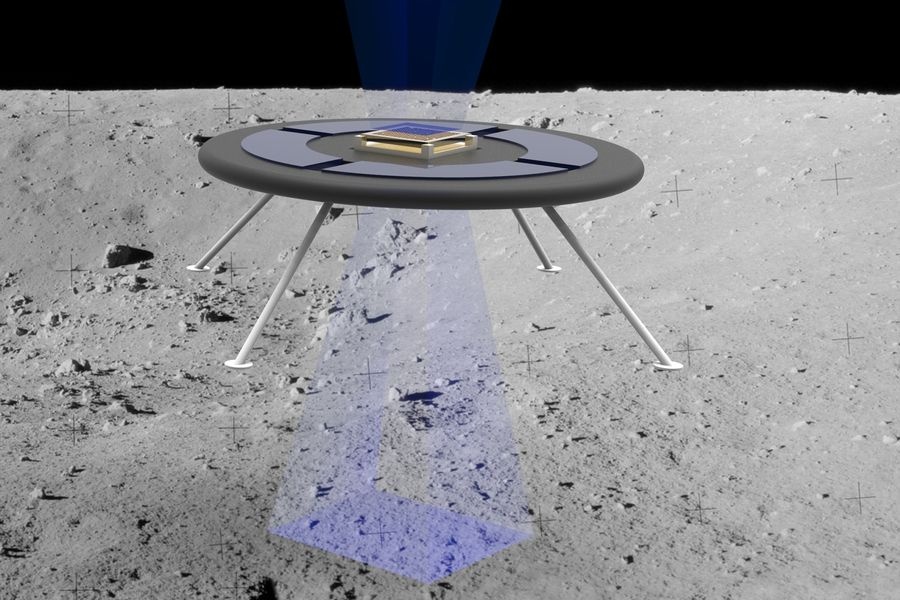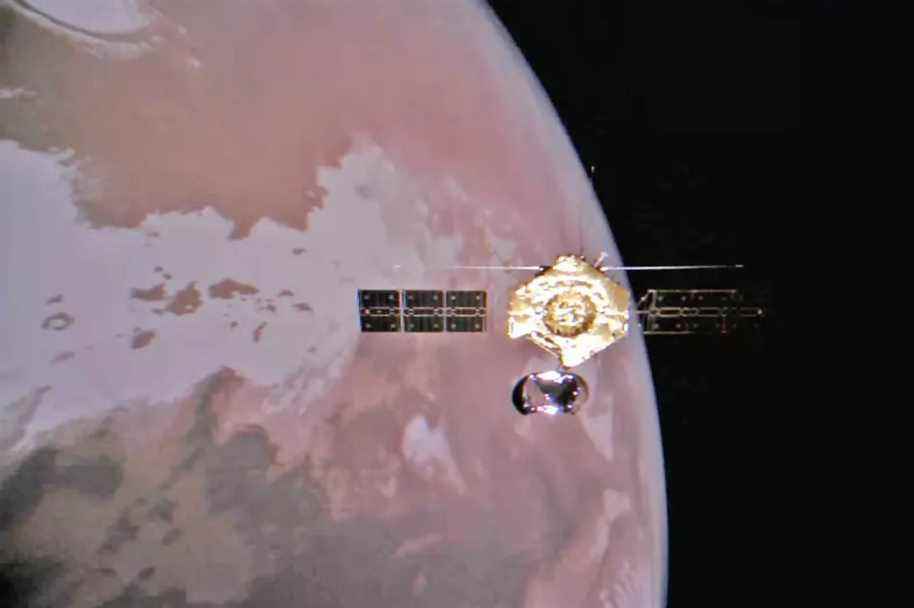Posted at 9:00 a.m.
Self-portrait above Mars
The Chinese Orbiter Tianwen-1 sent in early January a self-portrait sketched by a camera he dropped. This never-before-seen photo of a probe orbiting Mars shows Tianwen-1 (its name means “heavenly question”) above the polar cap. Tianwen-1 arrived near the Red Planet a year ago and dropped a lander and a rover.
Quiz
What have scientists discovered about a Martian meteorite found on Earth?

PHOTO FROM NASA WEBSITE
The Martian meteorite found in 1984 in Antarctica
That the organic molecules it contains were not formed by life. In Science, in mid-January, researchers from the Carnegie Institute describe how mineralogical processes in the meteorite, found in 1984 in Antarctica, are characteristic of the formation of these organic molecules. The meteorite was ejected from the Red Planet 4 billion years ago, likely by a meteorite impact, and ended up on Earth.
14%

PHOTO ALAIN ROBERGE, LA PRESSE ARCHIVES
The risk of prematurity is higher in women exposed to warmer outdoor temperatures, according to an Australian study.
It’s the increased risk of prematurity in women exposed to high outdoor temperatures, according to a new Australian study. It is published in January in a special issue of the journal Pediatric and Perinatal Epidemiology devoted to climate change, with other similar studies conducted in Texas and Israel. They conclude that the higher risks for babies are mostly concentrated in poor families who are presumed to be unable to benefit from air conditioning.
The Kunga Mystery Solved

PHOTO GLENN SCHWARTZ, SUPPLIED BY JOHNS HOPKINS UNIVERSITY
The Kungas of Umm el-Marra
The animal skeletons found 20 years ago on the site of Umm el-Marra, in Syria, are indeed those of kungas, hybrid equines described in ancient Mesopotamian texts. Researchers at the Jacques Monod Institute in Paris have even identified the species at the origin of these hybrids, the common donkey and the Mesopotamian onager, a Syrian wild ass whose last individual died in a Viennese zoo in 1927. The 25 kungas were found in a 4,300-year-old burial complex at this site east of Aleppo. The genetic identification of kunga was described in mid-January in the journal Science Advances.
Levitate on the Moon

PHOTO PROVIDED BY MIT
Artist’s impression of the levitating probe
Engineers from the Massachusetts Institute of Technology (MIT) have developed a device capable of hovering above celestial objects without an atmosphere, such as asteroids and the Moon. Their device, unveiled in a press release just before Christmas, uses the electrostatic charge of surface dust, generated by direct exposure to sunlight. That’s why lunar dust stuck so much to Apollo’s space suits.

